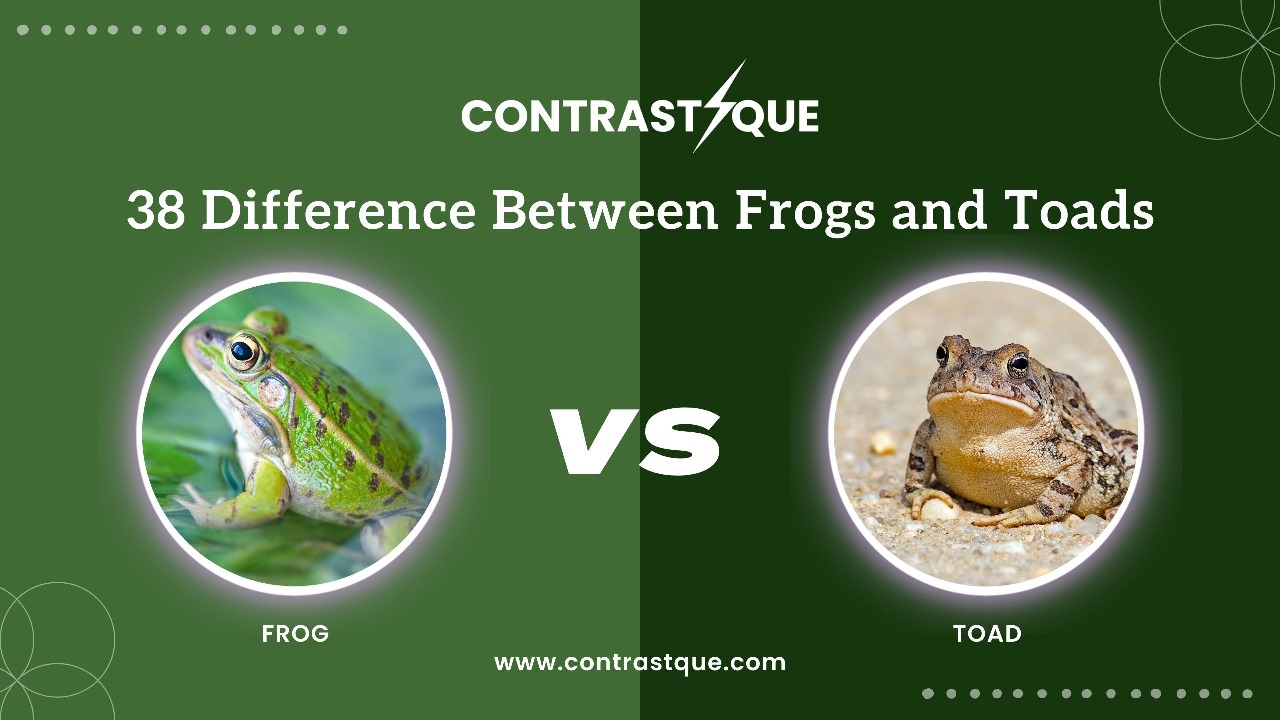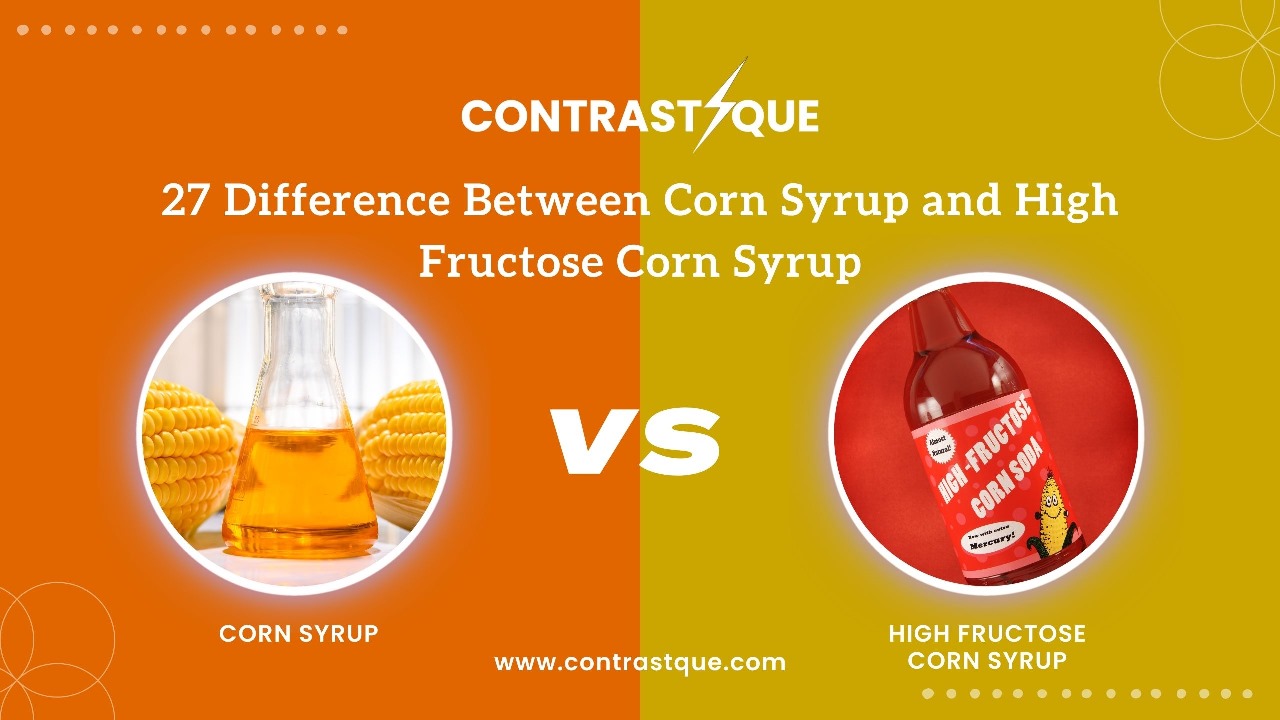Introduction: Why is it important to know the difference between frogs and toads?
Ribbit! Ribbit! Have you ever wondered what makes a frog different from a toad? These fascinating creatures have been the subject of countless legends, stories, and fairy tales. While they may seem similar at first glance, there are actually several key differences between frogs and toads that set them apart. Understanding these distinctions can help us appreciate their unique qualities and better understand their roles in our ecosystems.
In this blog post, we will dive into the world of amphibians and explore 38 fascinating differences between frogs and toads. From their physical characteristics to their habitats, behaviors, diets, reproduction habits, and even some quirky traits that make them stand out – we’ll cover it all!
So sit back, relax by a pond or stream (or wherever your reading spot may be), as we embark on an exciting journey through the enchanting realm of frogs and toads. By the end of this article, you’ll be able to impress your friends with your newfound knowledge about these captivating creatures. Let’s jump right in!
Here are 38 Difference Between Frogs and Toads
|
S.No. |
Aspect |
Frog Characteristics |
Toad Characteristics |
|
1 |
Skin texture |
Smooth and moist |
Dry and bumpy |
|
2 |
Body shape |
Slender and streamlined |
Stocky and squat |
|
3 |
Skin color |
Bright and vibrant |
Dull and earthy tones |
|
4 |
Habitat |
Aquatic and terrestrial |
Terrestrial |
|
5 |
Preferred moisture |
High moisture levels |
Lower moisture levels |
|
6 |
Preferred environment |
Near water bodies |
A variety of habitats |
|
7 |
Movement |
Excellent jumpers |
Hops and walks |
|
8 |
Toe structure |
Webbed toes |
Non-webbed toes |
|
9 |
Eggs |
Clustered in gelatinous masses |
Laid in long strings |
|
10 |
Tadpole appearance |
Tadpoles have smooth tails |
Tadpoles have bumpy tails |
|
11 |
Vocalization |
Produce melodious calls |
Produce harsh calls |
|
12 |
Nocturnal/Diurnal |
Mostly nocturnal |
Can be diurnal |
|
13 |
Eyes |
Round and bulging |
Round and less bulging |
|
14 |
Teeth |
Have small, fine teeth |
Lack teeth |
|
15 |
Glands behind eyes |
Parotoid glands present |
Parotoid glands absent |
|
16 |
Jumping ability |
Excellent jumpers |
Short hops |
|
17 |
Diet |
Carnivorous, eat insects |
Carnivorous, eat insects |
|
18 |
Metamorphosis duration |
Faster metamorphosis |
Slower metamorphosis |
|
19 |
Lifespan |
Typically shorter |
Typically longer |
|
20 |
Longevity in captivity |
Shorter lifespan |
Longer lifespan |
|
21 |
Sensory organs |
Well-developed sight and hearing |
Reliant on vision |
|
22 |
Active period |
Active during warm, wet weather |
Active in various conditions |
|
23 |
Locomotion |
Excellent swimmers |
Limited swimming ability |
|
24 |
Mating behavior |
Complex courtship rituals |
Simpler courtship behaviors |
|
25 |
Poison glands |
Lack poison glands |
May have poison glands |
|
26 |
Speed |
Faster swimmers/jumpers |
Slower movers |
|
27 |
Family representation |
Various families |
Bufonidae family |
|
28 |
Fertilization method |
External fertilization |
Internal fertilization |
|
29 |
Tolerance to pollution |
Sensitive to pollution |
More tolerant to pollution |
|
30 |
Hibernation |
May hibernate |
Often hibernate |
|
31 |
Preferred prey |
Hunt smaller insects |
Ambush and swallow prey |
|
32 |
Preferred temperature |
Prefer warmer temperatures |
Tolerate cooler temps |
|
33 |
Skin secretions |
May secrete mucus |
May secrete toxins |
|
34 |
Skin moisture levels |
Moist skin |
Dry skin |
|
35 |
Popularity in culture |
Often associated with positive symbolism |
May have negative connotations |
|
36 |
Life stages |
Egg, tadpole, froglet, adult |
Egg, tadpole, toadlet, adult |
|
37 |
Conservation status |
Varies by species |
Some species threatened |
|
38 |
Range |
Global distribution |
Varied distribution |
Physical Characteristics: Differences in appearance and body structure
When it comes to distinguishing between frogs and toads, their physical characteristics play a crucial role. While both amphibians belong to the same class, they have noticeable differences in appearance and body structure.
Let’s talk about size. Generally, frogs tend to be slimmer and more streamlined compared to their chunkier counterparts – the toads. Frogs have longer legs built for jumping while toads possess shorter legs adapted for hopping short distances.
Another visible difference lies in their skin texture. Frogs typically have smooth, moist skin that appears slimy due to the mucous glands present on their bodies. On the other hand, toads have drier and bumpier skin with warts or bumps known as parotoid glands that secrete toxins as a defense mechanism against predators.
Furthermore, if you ever get up close with these amphibians, take a look at their eyes. Frogs usually have bulging eyes that provide them with excellent vision above water level. In contrast, most species of toads possess smaller eyes positioned higher on their heads which allow them better vision when submerged underwater.
Let’s not forget about coloration! While there are exceptions within each group, frogs often display brighter colors such as greens and yellows that help camouflage them among vegetation near water sources. Toads usually exhibit earth-toned hues like browns and grays which aid them in blending into terrestrial surroundings.
Now you know some of the key physical characteristics that can help differentiate between frogs and toads! Stay tuned for more fascinating insights into these remarkable creatures.
Habitat and Environment: Where do frogs and toads live?
Frogs and toads can be found in a variety of habitats around the world, adapting to different environments based on their specific needs. While both amphibians require access to water for breeding purposes, they differ in their preferred habitats.
Frogs are typically associated with aquatic environments such as ponds, lakes, rivers, and marshes. They have smooth skin that helps them absorb moisture efficiently. Frogs are excellent swimmers due to their long hind legs and webbed feet. Some species also have adhesive pads on their toes that allow them to climb trees or stick to surfaces near bodies of water.
Toads, on the other hand, tend to prefer terrestrial habitats like forests, grasslands, deserts, or gardens. Their warty skin provides camouflage and protection from predators in these drier surroundings. Toads have shorter back legs compared to frogs but still possess the ability to leap short distances when needed.
Frogs thrive in moist areas with ample vegetation while toads are more adaptable and can tolerate arid conditions better than most frog species.
In summary (Note: This section should not include a summary), understanding where frogs and toads live is crucial for conserving their natural habitat diversity as well as supporting overall ecosystem health.
Behavior and Diet: How do frogs and toads behave differently? What do they eat?
Frogs and toads may look similar, but their behavior and diet are quite distinct. Let’s dive into the fascinating world of these amphibians!
When it comes to behavior, frogs are known for being more active than their counterparts. They are excellent jumpers and swimmers, using their powerful hind legs to propel themselves through water or leap onto land. Frogs also have smooth, moist skin that allows them to absorb oxygen directly from the environment.
Toads, on the other hand, have a more sedentary lifestyle. They prefer walking or hopping rather than jumping long distances. Toads also possess dry, warty skin that helps prevent water loss.
In terms of diet, both frogs and toads are carnivorous creatures who enjoy a diverse menu. Frogs primarily feed on insects like flies, beetles, ants, and mosquitoes. Their long sticky tongues help them catch prey with lightning-fast precision.
Toads have a broader palate as they consume not only insects but also spiders, worms, small crustaceans like snails and slugs – even other amphibians! Some larger species of toads can even tackle mice or small birds if given the opportunity.
So next time you spot an amphibian in your backyard or near a pond reflect upon its unique behaviors and culinary preferences – it might be either a frog happily leaping away or a contented toad quietly watching its surroundings!
Reproduction: Mating habits and lifecycle of frogs vs toads
Reproduction is a fascinating aspect of the amphibian world, and frogs and toads have their own unique mating habits and lifecycles. Let’s dive in and explore the differences between these two species when it comes to reproduction!
Frogs typically reproduce in water, laying their eggs in jelly-like masses called spawn. The male frog will grasp onto the female’s back during mating, a behavior known as amplexus. As she releases her eggs, he fertilizes them externally with his sperm. This process ensures that the eggs are protected by the gelatinous coating until they hatch into tadpoles.
Toads, on the other hand, lay their eggs in long strands or chains instead of masses like frogs. Similar to frogs, male toads also utilize amplexus while mating. However, what sets them apart is that female toads often lay their eggs on land near water sources such as ponds or streams.
Once hatched from their respective egg forms, both frogs and toads undergo metamorphosis. Tadpoles gradually develop legs before eventually transforming into adult amphibians. It’s truly amazing how these creatures transition from aquatic life forms to land-dwelling organisms.
In terms of lifecycle duration, individual species can vary greatly among both frogs and toads. Some may complete this entire cycle within weeks or months while others may take years depending on factors such as environmental conditions and availability of food sources.
Understanding the different reproductive strategies employed by frogs versus toads provides insight into their remarkable adaptability within various ecosystems around the world!
Unique Features: Interesting traits that distinguish frogs from toads
Frogs and toads may seem similar at first glance, but upon closer inspection, you’ll discover some fascinating features that set them apart. Let’s dive into the unique characteristics of these amphibians!
One notable distinction is their skin texture. Frogs have smooth and moist skin, while toads possess rougher and drier skin with warts or bumps. This difference in texture helps frogs maintain hydration levels in aquatic environments, whereas toads can thrive in drier habitats.
Another distinguishing feature lies in their preferred habitats. Frogs are usually found near water sources like ponds, lakes, or streams due to their need for moisture during reproduction. On the other hand, toads are more adaptable and can inhabit a wider range of terrestrial environments such as gardens or forests.
When it comes to behavior, frogs tend to be more agile and skilled jumpers compared to their counterparts. They have long hind legs designed for leaping distances both on land and through water. Toads have shorter hind legs which make them less adept at jumping.
Dietary preferences also differ between frogs and toads. While both species consume insects as part of their diet, frogs are known for being voracious eaters who capture prey with their sticky tongues. Toads typically have a slower feeding approach; they rely on ambushing unsuspecting insects within striking distance.
Let’s talk about vocalizations! Frogs are renowned singers of the animal kingdom – think of those enchanting croaks heard during warm summer nights near bodies of water! Male frogs use vocalization as a means of attracting mates during breeding season. In contrast, although some species of toad produce sounds too (usually soft trills), they don’t possess the same melodious repertoire as frogs do.
Frequently Asked Questions (FAQs)
Q1: Are frogs and toads the same species?
No, frogs and toads are not the same species. Although they both belong to the amphibian family, they have distinct characteristics that set them apart.
Q2: Can you tell a frog from a toad by its appearance alone?
In most cases, yes! Frogs tend to have slim bodies with smooth skin, while toads typically have stockier bodies with rougher, warty skin. However, there are exceptions like the smooth-skinned American Toad or the warty-skinned Tomato Frog.
Q3: Do frogs and toads live in different habitats?
While there is some overlap in their preferred habitats, frogs generally prefer moist environments near water bodies such as ponds or lakes. Toads, on the other hand, can be found in a wider range of habitats including drier areas like forests or grasslands.
Q4: What do frogs and toads eat?
Both frogs and toads are carnivorous and feed on insects such as flies, ants, crickets, spiders,and even small vertebrates like mice or birds.
They catch their prey using their long sticky tongues.
But it’s important not to always assume that all amphibians eat this way,some might also consume plant material.
Q5: How do frogs and toads reproduce differently?
Frogs lay their eggs in clusters known as spawn which float on top of water surfaces.
To protect them from predators.
Toads,on the other hand,lay eggs with long strings attached.
These strings stick onto plants underwater.
The young ones hatch into tadpoles before undergoing metamorphosis into adults..




